Mythological Motifs in Mainstream Media
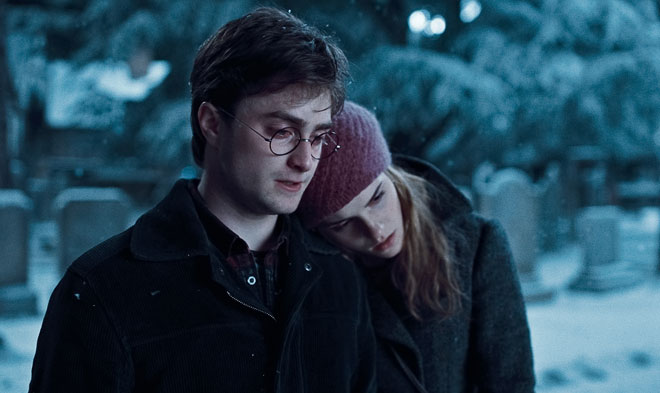
“The usual hero adventure begins with someone from whom something has been taken, or who feels there is something lacking in the normal experience available or permitted to the members of society. The person then takes off on a series of adventures beyond the ordinary, either to recover what has been lost or to discover some life-giving elixir. It’s usually a cycle, a coming and a returning.” – Joseph Campbell, The Hero with a Thousand Faces
Before the ancient world and the earliest of languages, human beings have been telling stories. Storytelling is part of human nature. From literature to cinema to music, our culture embraces stories in every medium and on every platform. Some of the most popular by today’s standards include the space opera Star Wars, the coming-of-age fantasy Harry Potter, and the sprawling epic Lord of the Rings. The mass appeal of these properties is largely directed towards the characters and motifs that appears in these books and films; the heroes are relatable, the villains are threatening, the supporting characters are funny and fleshed out. All of these elements have a history. As mythologist Joseph Campbell posits in his book, The Hero with a Thousand Faces, plots and archetypes are cyclical. They reappear and reemerge throughout millennia in every society and culture, dating back to Greek and Roman mythology. Luke Skywalker, Harry Potter, and Frodo Baggins may be relatively new faces to fiction, but they all have their origins in the rich legends of Ancient Greece.
The Hero’s Journey

At the deepest roots of storytelling’s history is the classic good-verses-evil narrative. It appears in almost all of Greek and Roman mythology, as well as ancient religious texts from Judaism to Islam. Conquering evil is made capable only by a Hero; from mighty Mythic saviors like Beowulf and Hercules in the epics, to peaceful saviors like Jesus Christ from scripture, the hero archetype has many faces, but all bear similar story structures that are designed to best signify their given hero’s journey, or “character arc” as it’s most commonly referred to in literary studies. Joseph Campbell identifies the origins of the hero archetype in The Hero with a Thousand Faces, and outlines a twelve-step progression that this character endures throughout his or her story – the Hero’s Journey, alternatively known as the monomyth.
(The following names for the steps are not directly lifted from the novel, as they have been identified differently by various critics and scholars.) The Hero’s Journey begins with (1) the Ordinary World: the protagonist is sympathetically introduced against the backdrop of an unsatisfactory environment; then (2) the Call to Action: an inciting incident triggers the need for the hero to leave the ordinary and face the extraordinary; (3) the Refusal to the Call: fearing the unknown and perhaps more importantly their own ability to face it, the hero tries to resist the call; (4) the Supernatural Aid: a mentor gives the hero wisdom that inspires him or her to answer the call;
Next is (5) Crossing the Threshold: the hero commits to the unfamiliar territory (referred to as the “Katabasis” in Greek mythology); (6) the Road of Trials: the hero is tested by enemies and challenges; (7) the Approach: the hero unites with newfound allies to overcome a significant obstacle; (8) the Ordeal: during the events of the significant obstacle, the hero faces death/greatest fear; (9) the Reward: the hero momentarily celebrates in victory for having survived the Ordeal and taken some sort of special treasure from it; (10) the Journey Back: the hero continues on their adventure with the possession of the special treasure that needs to be safely transferred (11) the Resurrection: the hero faces a second Ordeal, and is purified by a last, climactic sacrifice; and (12) the Return with the Elixer: the hero comes home to their original life, but with the special treasure as a reward.
Luke Skywalker, the protagonist of Star Wars, has become an iconic representation of the Hero, as his journey between A New Hope and Return of the Jedi closely adheres to Campbell’s twelve-step process. Writer/director George Lucas has been open about how The Hero with a Thousand Faces influenced him when writing Star Wars (he eventually collaborated with Campbell for the PBS documentary The Power of Myth in 1988), and his admiration for mythological storytelling is clearly present in the fantasy elements of Star Wars: knights, princesses, magic, etc. The nobility of Luke’s hero cycle even serves as a powerful antithesis to his father’s backstory, who turned into the evil Darth Vader. Anakin Skywalker’s devolution from a kind-hearted boy in The Phantom Menace to a power-hungry and emotionally-unstable man in Revenge of the Sith is an interesting story that unfolds since it so often mirrors Luke’s story, but has Anakin make the opposite decisions.
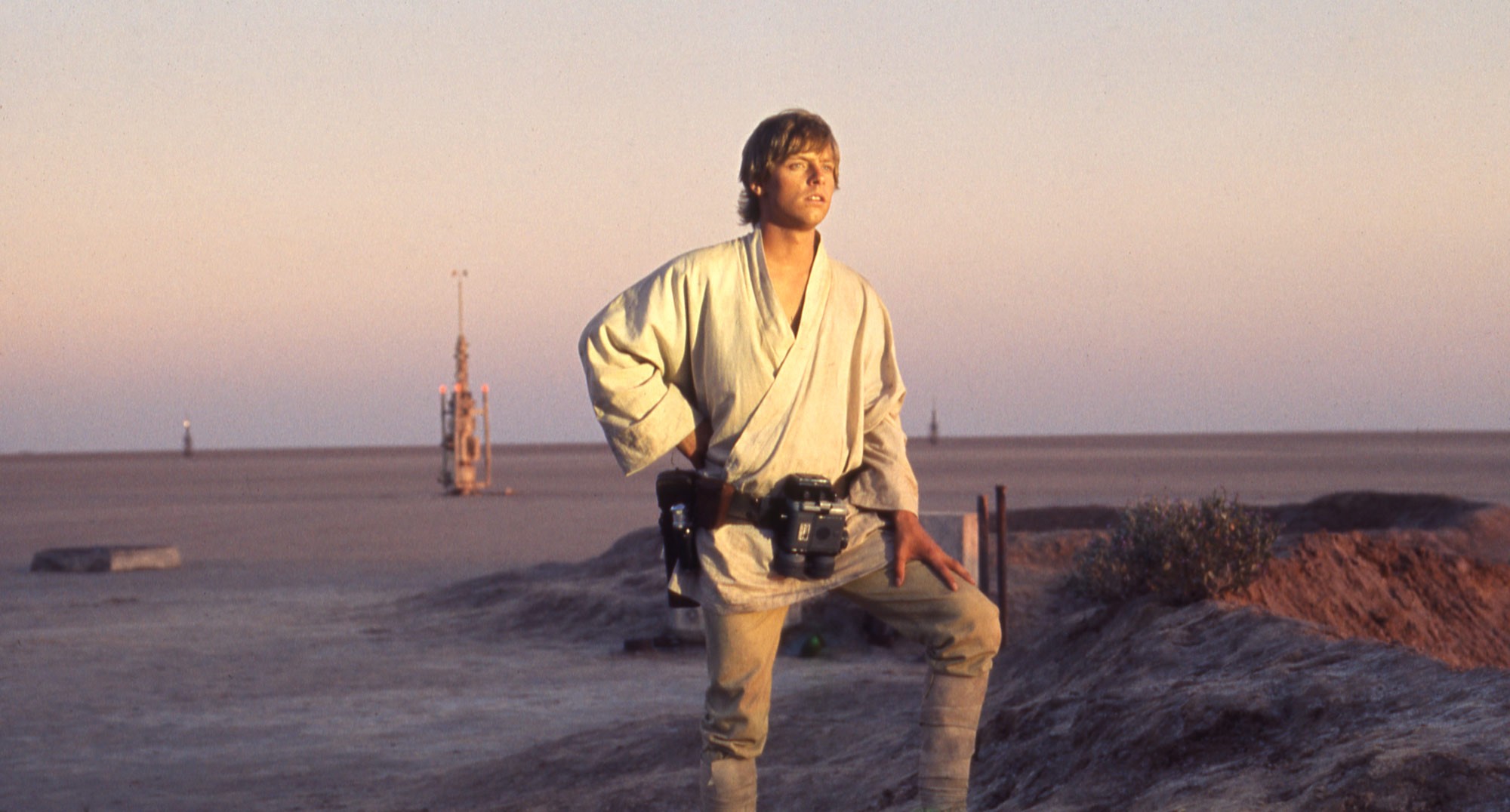
The classic image of Luke Skywalker staring off into the double sunset of Tatooine is not only a beautiful shot in cinema history, but it reveals a lot about his character: Luke longs for the truth about his heritage, and to be reunited with his family. As Joseph Campbell posits, the Hero has more than just one face; another young man of strong will and quiet sensitivity is Harry Potter. With a very similar upbringing (both are lonely orphans raised by a family with which they do not belong; dream of an adventure beyond their mundane world), Harry is an outcast, personified not only by his muggle blood but because he does not fit in with his family and lacks friendship (and due to his status as “The Boy Who Lived”). The prominent theme in the Harry Potter saga is that anything is possible when you have friends to overcome challenges with. It’s in Harry’s friendship with Hermione and Ron where he finally feels a sense of belonging and happiness, as well as success – both literally and metaphorically.
Likewise, Frodo Baggins – the orphaned hobbit of The Shire – endures every trial in his quest to defeat evil with the help of his fellow brothers and sisters in arms. In fact, it takes eight other loyal companions to form the Fellowship of the Ring needed to transport and destroy the One Ring. Frodo’s trusted friends like Aragorn protect him physically, but his friends like Samwise Gamgee shelter him mentally and emotionally. The significance of these supporting characters will be discussed in more depth later, but it is important to note that all of these Heroes recognize the need to collaborate with a community rather than face adversity alone.
The most compelling attribute of the Hero though is his/her passiveness to combat. In all three cases, whether it’s the middle of an inter-galactic war or in the invasion of an orc army, the Hero is shown to be a pacifist. Luke may wield a laser sword, but his defining moment in Return of the Jedi is when he yields his weapon and casts it aside, unwilling to continue fighting. J.R.R. Tolkein specifically chose the creature of the humble hobbit to be the Hero in both Lord of the Rings and The Hobbit. Frodo is no warrior, and throughout his entire journey never resorts to violence. Harry frequently refuses to get aggressive even when prompted to, like during the Tri-Wizard Tournament.
The Hero may be foretold by a supernatural calling, like the prophecies that foresee the futures of Luke and Harry, but it is purely by their nature that they earn the title of Hero. Fulfilling their ultimate goals is achieved not by any metaphysical force, but within the heroes themselves; by their characteristics of compassion and strong-will do Luke, Harry, and Frodo overcome all odds and restore balance to the world. “Working hard is important, but there’s something that matters even more. Believing in yourself.” – Harry Potter (Order of the Phoenix)
The Dark Deceiver
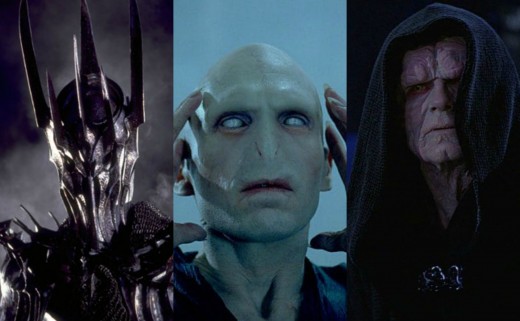
Every hero needs a good villain. Some may even say a story is only as good as its villain. In the case of Lord of the Rings, Harry Potter, and Star Wars, it’s no wonder these franchises have endured such long-lasting popularity. The Fellowship of the Ring film opens with an epic prologue describing the threat of The Dark Lord Sauron, who means to overthrow the people of Middle Earth. In Harry Potter, the first scene shows Harry as an infant, imprinted with the scar of Voldemort, the most terrible wizard who ever lived, who is so feared that virtually no witch or wizard dare speak his true name. A New Hope also begins with the villains: a massive Imperial Star Destroyer takes over the entire frame, and Darth Vader boards the fleeing rebel ship to take prisoners and slaughter his enemies.
A common thread between these Big Bads is that they use deception to gain power. In Greek mythology, trickery is not reserved exclusively for villainous action, but its usage is almost always linked to tragedy and ethos. Take The Odyssey, which features the greatest example of deception with The Trojan Horse. As with many abstract concepts like love and beauty, deception is personified by the spirit of Dolos, who is a master of craftiness. Although not originally attributed to the character, Grendel’s mother in Beowulf has been adapted several times as a seductress, like in the 1999 and 2007 films. A popular trickster in Norse mythology is the demi-god Loki, who has since been adapted into the archenemy of the superhero Thor in Marvel comics and other media. Likewise, Tolkien, Rowling, and Lucas have adopted the traits of the trickster archetype for their own villains.
A formidable conjurer of dark magic, Sauron crafts the great rings of power as posed gifts for the elves, dwarflords, and kings of men. He seduces the rulers of Middle Earth with these rings, and then betrays them for having crafted The One Ring to rule them all. The rings don’t give power, they take it. After being slain by Isildur, Sauron’s spirit becomes one with The Ring, and his alternative form is an all-seeing eye who constantly seeks the whereabouts of The Ring. Sauron’s forces are also not strangers to dual personas; the ring wraiths appear as cloaked, faceless ghouls, but when wearing The Ring, they are revealed to be white ghosts of the original nine kings of men corrupted by Sauron. Similarly, the orcs are believed to be the corrupted versions of elves, bread for war and destruction instead of peace and tranquility. The Dark Lord Sauron conceals the true nature of things and turns them into flipped versions of themselves.
In similar fashion, Lord Voldemort deceives everyone, even Dumbledore, when he disguises himself as a new professor at Hogwarts in Harry Potter and the Philosopher’s Stone. Like Sauron, Voldemort’s first attempt at domination was unsuccessful, rendering him bodyless. Where Sauron attached himself to The Ring, Voldemort latches onto another wizard like a parasite. Enter Professor Quirrell: an unassuming, stuttering, absent-minded teacher. But concealed behind his turban is the face of Voldemort, attempting to infiltrate the school and eventually have his revenge against Harry. Voldemort’s followers also employ deception, as with Barty Crouch Jr. posing as Mad-Eye Moody in Goblet of Fire.
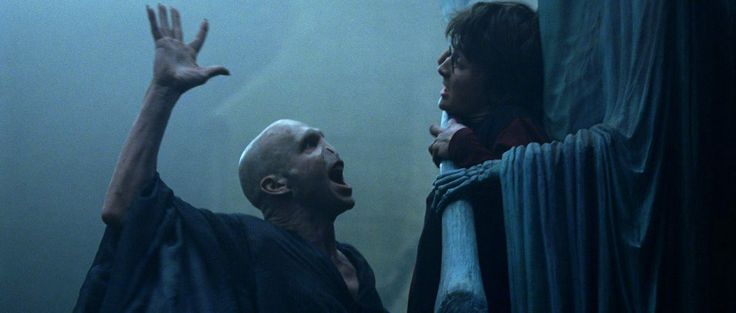
Sheev Palpatine starts out as a humble senator, but slowly and carefully persuades politicians, including the Queen of Naboo Padmé Amidala, into gaining influence over the senate and dissolving the Republic into a Galactic Empire, with himself as the appointed Emperor. Like a puppet-master, Palpatine methodically manipulates people of power until he eventually gets himself elected Supreme Chancellor, and with his emergency powers, orders the mass genocide of the Jedi and initiates a totalitarian regime. Nobody, not even the wisest of Jedi Masters, foresees Palpatine’s dark side – the secret Sith Lord, Darth Sidious.
Their deception comes at the cost of truth, which is visually represented by their lacking of an ordinary physical form. Sauron’s body is killed before the events of Fellowship, and he is forced to live on as a roaming spirit – not unlike Voldemort. After losing his original body pre-Philosopher’s Stone, “You-Know-Who” wandered the world as an aimless soul, sucking on unicorn blood for survival. It isn’t until the fourth installment when he is finally reborn in new flesh (although a noticeably defiled one). In his battle with Mace Windu, Palpatine’s skin is turned wrinkly and depraved, his voice scratchy, and his eyes yellow. Under The Emperor’s hood is a wicked, tortured version of what used to be a human man, as is tradition with villains in mythology.
Even when lacking in anatomical threat, these villains inflict menace over our heroes. Frodo is given the burden of taking The Ring to Mordor, which means he will constantly be tempted by the spirit that resides in it, as well as threatened by those around him who wish to take it. As Frodo is forced to battle with Sauron by simply carrying the One Ring, Harry is constantly haunted by “He Who Must Not Be Named” because he forever bears a lighting bolt scar as a mark of Voldemort. In every Star Wars movie (save for The Force Awakens), the character of “The Emperor” stays hidden in the shadows, operating behind the scenes, but his presence is always looming over the film, from The Phantom Menace to Rogue One to Return of the Jedi, and his evil philosophy is physically embodied by his apprentice, Darth Vader.
The parallels between current villains with the bad guys of old don’t end with just mythological antagonists. Particularly with Sidious, these dark deceivers exhibit commonality with real life villains. Not only does each of their rise to power resemble that of Hitler’s in 1939 Germany, their intolerance for “lowly” beings is congruent with the “Führer.” Take Voldemort’s obsession with blood purity; he despises half-bloods (individuals born of a Muggle (non-magic) and a wizard/witch) and subsequently glorifies pure-bloods. You’ll notice too that the Evil Empire seems to hire only humans – an effect from the very xenophobic Palpatine, who believes any other species outside of humans are unworthy to be a part of his perfect system. “Fear. Fear attracts the fearful. The strong. The weak. The innocent. The corrupt. Fear. Fear is my ally.” – Darth Maul (The Phantom Menace).
Sage Mage
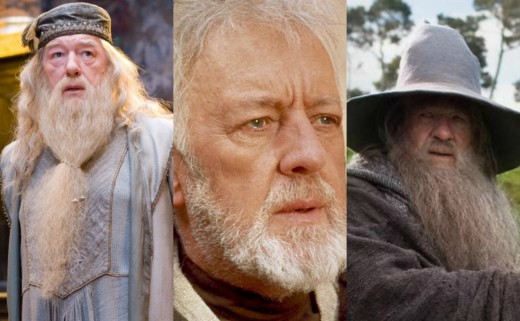
Luke, Harry, and Frodo didn’t start out as heroes. They needed a push, a catalyst: the turning point in Joseph Campbell’s Hero’s Journey is the Supernatural Aid in the form of a very important character. Campbell passed away in 1987, but his memory has lived on in the words of his friends, including George Lucas. “I consider him a mentor,” Lucas once said about the man who’s work inspired him to create a new face for the Hero in Luke Skywalker, and reintroduce the Monomyth to modern audiences. Note the director’s choice of word to describe the man who was his muse: mentor.
The “Mentor” archetype originates directly from Homer; The Odyssey features a character literally called “Mentor” – the old but wise ally to Odysseus’ son, Telemachus. The word has endured in the English language to represent individuals who inhabit such a role. Psychologist Carl Jung simply refers to this as the “Wise Old Man” character (although in The Odyssey, Mentor is actually Athena in disguise; therefore, the alternative: “Wise Old Woman”). The most notable appearance of this trope in classic literature is Merlin, from the legends of King Arthur, who exhibits not just old age and great wisdom, but powerful sorcery to boot. Like Homer’s Mentor, Merlin’s role in the Arthurian stories established the Wise Old (Wo)Man archetype as inherently linked to magic.
J.K. Rowling conjured her own Merlin-like mogul for the Harry Potter saga in Albus Dumbledore: headmaster to Hogwarts School of Witchcraft and Wizardry. Not only does he bear a striking resemblance to most visual representations of Merlin, Dumbledore serves as an educator to the young protagonist (Arthur in The Sword in the Stone/Harry Potter) in a castle setting. Every installment in the Harry Potter series involves Harry having to overcome a certain struggle, and in turn, learn a new lesson. Dumbledore watches over Harry during his time at Hogwarts and shepherds him through these trials. He quickly becomes a father figure to Harry, who was orphaned as an infant and is neglected and abused by his adoptive family. Dumbledore’s paternal presence is crucial for the growth of Harry as a character, but is cut short by Severus Snape after being instructed to assassinate the old man by He Who Must Not Be Named.
Similarly, Luke Skywalker is also orphaned from birth, but educated in the ways of the Force by the fatherly “Ben” Kenobi in A New Hope. George Lucas drew inspiration from the character General Makabe Rokurōta in the classic Japanese film The Hidden Fortress when writing Master Obi-Wan Kenobi. Luke’s Uncle Owen even refers to the man as a “monk” and “wizard”, since he dresses in robes, sports a white beard, and practices a religion that has become all but extinct by the time of A New Hope. Trained in the Jedi arts, Obi-Wan was a member of the Jedi Order: an organization of peacekeepers who harnessed a mystical presence known as “The Force”. He passes his knowledge onto Luke before being struck down by the Dark Lord of the Sith (the otherwise antithetical Jedi), Darth Vader.
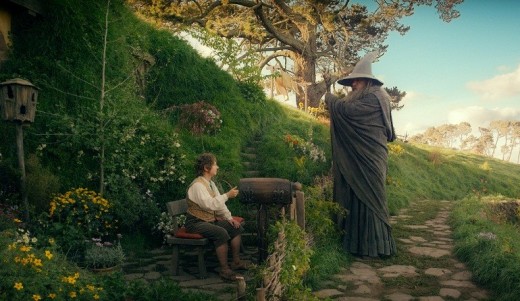
J.R.R. Tolkien was no stranger to mythology, who wrote The Hobbit and Lord of the Rings in the vein of ancient storytelling. For the orphaned hobbit, Frodo Baggins, Gandalf the Grey is like a second father (next only to Uncle Bilbo). A wizard as old as time itself, Gandalf is known to the people of Middle Earth as a wizard, but has alternatively been known by names like Mithrandir, to the Elves, and Olórin, in Valinor (from Valar, or the magical realm of the special, angelic beings destined by the Creator to aid those who seek help). The spirit of Olórin takes the form of an old man for the very reason that, much like Merlin, Dumbledore, and Obi-wan, people are most receptive to the advice of an elderly figure who carries great wisdom. Indeed, Gandalf is wise, and also self-sacrificing; when Frodo and his friends encounter a dangerous creature on the journey, Gandalf faces the monster alone to save the others, which ends in his death.
Fans of Rowling, Lucas, and Tolkien often gravitate to these sage mages, channeling a certain likeability that equally attracts the other characters (ie. Harry, Luke, and Frodo) in their respective stories. These wise wizards are integral to the progression of the Hero’s Journey, as they introduce the protagonist to their ultimate mission: for Harry, the truth about the Horcruxes that need to be found in Half-Blood Prince; for Luke, a princess in captivity and the looming threat of an Imperial weapon of mass destruction in A New Hope; for Frodo, the secret of The One Ring and how to destroy it in The Fellowship of the Ring. Once the heroes are set off on their journey, equipped with the tools and teammates needed for the adventure, their mentors suddenly vanish when seemingly needed most.
The abrupt deaths of Dumbledore, Obi-Wan, and Gandalf represent a passing-of-the-torch moment for Harry, Luke, and Frodo, respectively; the Hero must be forced to embrace his given purpose on his own. What makes Frodo Baggins a compelling character is that despite being the most unlikely of creatures, next to great warriors (Gimli), acrobatic archers (Legolas), and skilled swordsmen (Aragorn), it’s but a young, innocent hobbit from The Shire who willingly abandons his friends in arms to carry the burden of The Ring alone. We root for the underdog, especially when he faces his trials without the help of an over-powered Old Man to do everything for him.
Although the loss of the mentor ultimately strengthens the Hero, these sage mages are never gone for good. In the trench run of the Death Star, Luke hears the quiet voice of his gone mentor, reminding him to “use The Force” instead of relying on the technological equipment. The mysterious words of the ghost of Obi-Wan are no hallucination; in the subsequent film, Obi-Wan reappears to his apprentice in a blue aura, having become one with The Force. Harry also communes with his dead headmaster when killed by Voldemort and awaking in a purgatory-like dreamscape, greeted by his old friend. Perhaps most interesting a resurrection, though, is Gandalf’s, who comes back from the grave in The Two Towers, appearing in white robes as ‘Gandalf the White’.
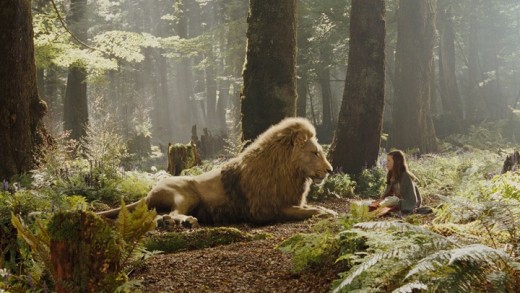
The divinely return of Gandalf in The Lord of the Rings bears resemblance to the resurrection of Aslan the Lion in The Lion, the Witch, and the Wardrobe – written by Tolkien’s good friend, C.S. Lewis. Aslan, The Great Lion and son of the Emperor-Over-the-Sea, plays the same role of magical mentor in The Chronicles of Narnia, but with particular religious connotation; the allusions between Aslan and Jesus Christ are most prominent when Aslan is sacrificed on the alter by the enemy, only to defy Death and rise again as Jesus did on the third day after Crucifixion. Tolkien, who was also devoutly Christian, invoked the same Messianic attributes in Gandalf, who’s influence on Frodo and other the Fellowship members is noticeably God-like.
The “sage mage” archetype is not limited to just one character in the story; often and especially in the absence of the initial mentor figure, the Hero confines in a second mentor who usually provides a particular lesson – one that the former neglects to share with the Hero. For example, as worldly and wise as Dumbledore is, he lacks the intimate relationship with Harry’s parents that someone like Remus Lupin has. The third Professor in the Defense Against the Dark Arts to teach during Harry’s time at Hogwarts, Lupin shares many personal moments with Harry, encouraging him to overcome his fears and become a leader like his father. Obi-Wan did have a close connection to Luke’s parents, but failed to tell the young Jedi the truth about Anakin Skywalker. Only when Luke receives training from Yoda does he learn the real history of his lineage, which plays an important role in Luke’s eventual triumph. Likewise, almost immediately after Gandalf’s fall, Frodo is headed a warning from Lady Galadriel that one of his friends is going to try to take The Ring.
It should come as no surprise that these supporting sage mages generally face the same fates as Dumbledore, Obi-Wan, and Gandalf. Both Lupin and Sirius Black, Harry’s godfather, enter his life as mentor figures, but are ripped away all too quickly (Lupin is forced to resign when his werewolf secret is uncovered and stirs controversy with parents; Black, much like Dumbledore, is killed by an agent of Voldemort). Yoda, the most enigmatic character in the Star Wars mythos, at 800 years-old and no real backstory (not to mention, being the only of his race, known only as “Yoda’s species”), passes away in his sleep just before Luke’s climactic battle with Darth Vader ensues. Another notable Jedi, Master Qui-Gon Jinn (played by Liam Neeson, who coincidentally voiced Aslan in The Chronicles of Narnia films) serves as Obi-Wan’s own role modal, but is struck down by Darth Maul, allowing of course for young Obi-Wan to ultimately claim his victory against his master’s murderer.
What’s noteworthy about the mentor characters is that they’re limited. They serve a particular purpose, but never overshadow the Hero. Instead, they exist to guide the Hero onto his/her path, both at the beginning of his/her journey, and at the end. The mentor has arguable the most influence over the Hero, since not even death can put an end to the significance of the sage mage in the story. These characters serve as both the catalyst and the final comfort to the Hero on their journey, and use their magic not to cheat the Hero of his/her learning curve, but to constantly give him/her guidance, solace, and strength, even in death. “A wizard is never late, Frodo Baggins. Nor is he early. He arrives precisely when he means to.” – Gandalf the Grey (The Fellowship of the Ring, film).
Simple Sidekicks and Complex Companions
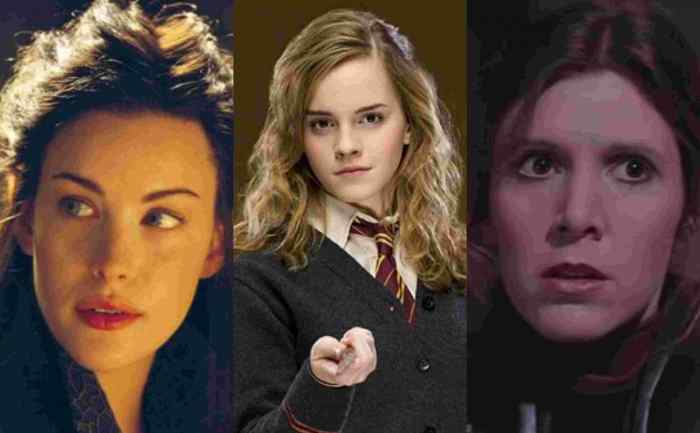
“Sidekick” is a relatively recent term in English, but “close companion” has a long history, possibly appearing first in the Mesopotamian poem, The Epic of Gigamesh. A secondary character, Enkidu, fulfills the same role we’ve come to equate to sidekicks like Sam and Ron by being an in-proportionate teammate and serving to strengthen the Hero on his/her journey. Sancho Panza solidified this archetype in the world’s (likely) first novel, Don Quixote. In this early 17th century book by Spaniard Miguel de Cervantes, Panza is a comedic foil to the titular hero, and routinely gets Quixote into troubling situations.
Traditionally, a sidekick functions as less-qualified hero, but with certain skill sets that allow him or her to work as a counterpart to the Hero. Some of the most iconic examples include Robin in Batman comics and Dr. Watson in Sherlock Holmes stories. Even in Lord of the Rings, Harry Potter, and Star Wars, the Heroes are aided by a number of trusty companions: Frodo’s fellow hobbits, like Merry and Pippin but especially his gardener, Samwise (as well as the other members of the fellowship); Harry schoolmates, like his buddy Ron, or his creature friends, like Dobby the house elf and Hedwig the owl; Luke’s unlikely partner, Han Solo, or even the always-reliable droids like R2-D2 and C-3PO. These sidekicks provide company to the Heroes, helpful assistance when needed, and comic-relief for the audiences.
Companions of the opposite sex, however, are not generally so 2-dimensional. Arwen from Lord of the Rings plays against the damsel-in-distress trope by being the one who saves the Hero from the Nazgûl, instead of the other way around (in the film). Hermione consistently proves herself to be the most resourceful of the trio. She’s a competent witch with a vast knowledge of spells, and protects her male counterparts more often than they protect her. The snarky Leia Organa quickly establishes herself as confident and capable, standing up to Darth Vader and Grand Moff Tarkin. Her sarcastic sense of humor and ever-eagerness to fight against the bad guys instead of being rescued by Luke and Han (she ends up rescuing them) are just some of the reasons that make her a compelling leading woman.
Most notably, the effectiveness of the female companion (the same can be said for allies of contrary gender (or sexual orientations) of Heroines) is that she is not romantically linked with the Hero. Instead, the romantic elements of the story are reserved for the sidekick characters. Aragorn from Lord of the Rings isn’t a typical sidekick like Sam, but his role as a servant to Frodo is just as important. Although the story does not start with him, Strider has a heroic arc of his own, and much of that is linked to his relationship with Arwen. Because Arwen is an elf, and Aragorn a (half) human, their love is unconventional – perhaps a nod to the Shakespearean forbidden romance, since Arwen decides to give up her immortality for Aragorn as Juliet kills herself for Romeo.
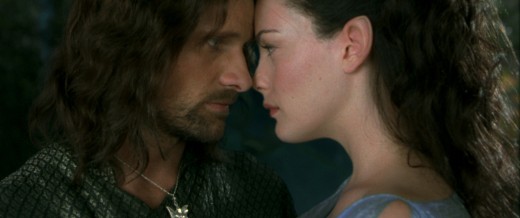
The relationship between Harry Potter and Hermione Granger is arguably the greatest example of a platonic relationship in popular culture. Rowling never teases the potential of a love triangle between Harry, Hermione, and Ron. Early on there are signs of romantic tension between Hermione and Ron, who bicker constantly but also are attracted to one another. This never happens with Harry. Instead, him and Hermione have an immediate connection, and their best friend status works so well because it never goes beyond that. It’s almost as if Hermione is more of a sister to Harry, since they’re so close and so reliable on one another.
Speaking of familial ties, Luke and Leia share a stronger bond than just friendship. With the obvious exception of their brief kiss in Empire Strikes Back (and it’s worth noting this was not out of any romantic context, but simply to spite Han), Luke and Leia get along great with no sexual tension, long before it is revealed that they are in fact siblings. Instead, much like with Hermione and Ron, Leia shares an affection for Han, but also quarrels with him continually. It is in Han and Leia’s squabbles what makes their relationship so likeable and interesting. With Luke, Leia is a strong supporter, a wise friend, and a sympathetic sister.
Simple sidekicks and complex companions can be compelling characters in their own right, but their significance to the story is to highlight the necessity of the Hero. Hermione may be the best potions expert and Han Solo may have the best shot in this side of the galaxy, but no ordinary man or woman can save the world. It is the unique unqualified nature of the unlikely Hero that makes him/her the most qualified to overthrow the Empire or defeat the Dark Lord or destroy The One Ring. However, teamwork is always important to meeting these ends, and the supporting characters in these age-old stories always serve to demonstrate cooperation and community. “You can trust us to stick to you, through thick and thin – to the bitter end. And you can trust us to keep any secret of yours – closer than you keep it yourself. But you cannot trust us to let you face trouble alone, and go off without a word. We are your friends, Frodo. ” – Merry (The Fellowship of the Ring, novel).
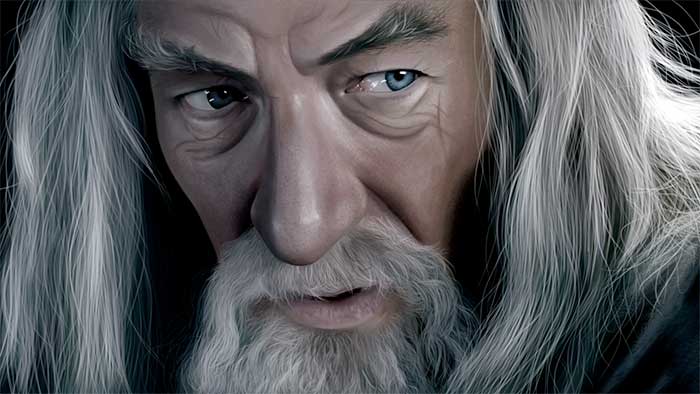
Star Wars, Harry Potter, and Lord of the Rings all draw from the history of mythology, and history of course is cyclical; these characters and motifs will continue to reappear in literature and film, just as they have in the past several millennia. The Hero will take on a thousand more faces, face new threats, receive aid from more mentors, and find community in different companions – but each of these elements will always stem from a common ancestor. Joseph Campbell’s work allows us to read fiction in light of commonality and difference, and explore exciting opportunities to tell stories. These templates will live on as a mode for humans to connect and engage with imagination, to see and think about the world, and above all, to celebrate the infinite value of storytelling.
What do you think? Leave a comment.











Lovely piece. Greek history plays into much of modern media and you can notice these influences in Star Wars. Mythology is a way to help explain how the world works, much as Star Wars does, just in alternate realities. There is the struggle that Greek heroes go through, that the Jedis of Star Wars have to combat as well. Luke Skywalker had to go on a journey away from his home, and he had teachers and leaders such as Obi-Wan Kanobi, and Yoda who guided him on how to stay on the good/right path… Much as how Greek heroes were often assisted by gods to do things they otherwise wouldn’t be able to do. Greek Mythology was one of the first developed civilizations with stories, culture, and connections that we look back to for explanations of different aspects of life. There are many modern influences from Greek culture, like the alphabet, democracy, mythology etc.
The video game “Metal Gear Solid 3” presents an unconventional spin to the mentor/hero dynamic in that by the end, it is the hero himself who must kill his mentor in battle in order to complete his journey, and the mentor accepts this with grace and courage. The ONLY other story that I can think of where the mentor dies by the student’s hand in order for him/her to complete the journey is Star Wars, with the Rule of Two, but in SW it’s seen as a villainous tradition devoid of any heroism, except for Episode VI, when Vader betrays and murders Sidious.
You know how Twilight inspired 50 Shades of Gray? Same thing with the Bible and LoTR, apparently. Except Tolkien was actually a competent author.
Totally love Harry Potter with or without the mythologies…..we are talking about fiction right? So who came up with what first really doesn’t matter, it is just really interesting for people who don’t know anything about this topic. Which is why this article is awesome…..to the devout mythologist or to the novice.
I do think that there is mythology in Star Wars because the movies show key elements of a myth. In the first three movies, the main character, Anakin Skywalker, shows many heroic elements, such as having an identity and role in a warrior society, has a desire to be recognised by his superiors. He’s on a quest for immortality (more for his wife, but he craves power and living large), he doesn’t want to lose face or honor after being in the Jedi Council, he wanted to feel worthy and not just a pawn for the Council and Chancellor. Anakin wants all the prizes, fame, and worth. He had excessive pride about his wife/family, his power, his worth, which eventually lead to his downfall (hubris). Throughout all six movies, guest/host relationship is shown whenever anyone has to land on a planet. The planet’s home people let Jedis stay with them. So yes, Star Wars does have mythology within it.
All of J.R.R. Tolkein’s work is deplorable. His depiction of the Ents was blatantly racist.
I felt like Star Wars was just Hidden Fortress remake
Not so at all. The points of comparison between the two films are strongest when you’re talking about the droids and the short desert sequence where they land, as well as the age-old rivalry between Vader and Kenobi as well as the fact that both stories are fairytales, but beyond that they are actually quite far from each other.
The first draft was very much Hidden Fortress inspired though; being essentially Hidden Fortress in Space. But it’s a serious stretch of the imagination to say that it’s final form is in any way a remake.
This is a great article. The story of LOTR has a lot of interesting parallels to the story of the bible, specifically the battle between God and Satan.
You cannot begin to fathom the amount of thought Rowling has put into names in the books. She has stated on many occasions that she likes collecting names and uses them where she thinks they fit.
Almost every name in the series has an interesting origin or affiliation. For eg., most of the Blacks are named after stars and constellations, all of the Weasleys are named after characters from Arthurian Legend, the pets are all named after mythological characters.
Might share this to my Harry Potter-crazed and Tolkien friends.
One of the greatest influences on Rowling’s world has to be the television show “Bewitched.” The conflict between the witching world and human world is apparent. Is there a bigger muggle in the world than Darrin? Also, I swear Doctor Bombay must be a Hogwarts professor.
I wish The Silmarrion went in theaters
That one would be pretty cool if they managed to adapt it well. I remember having real difficulty getting through The Silmarillion when I first read it since the content is pretty dense and sometimes difficult to get through. It wasn’t one of my favorites. I think a movie adaptation would definitely help clarify things for me. Or maybe expand it into a TV series instead?
There might be a hidden meaning of all of the characters in Star Wars and what happen in the movies. I honestly think they are simply just a series of movies but who knows. There could easily be a deeper meaning to the fact that Darth Vador is Luke’s father.
The stories within the Star Wars films present like myths. In both cases, heroes are thrust into their role in a time of need and are then made to face great struggle. Conduct in battle is a key factor in determining strength in addition to character. They are also collections of well known stories that have the potential to teach. Like Yoda, Greek myths have oracles and other sources of guidance that help heroes reach victory.
I see that Tolkien’s work has alot of parallels to the bible.
I have always loved that, in the Silmarillion, the origin of evil was pride, and its first fruit was the destruction of harmony. This resonates very strongly with many people’s sense of morality, I think. As Gandalf put it, in the beginning, not even the Dark Lord was evil. Of course, he meant Sauron when he said this, but I think this holds true for Melkor as well. The parallels between Melkor and Lucifer are obvious, but I strongly deny allegations that Tolkien intended a Christian allegory by this. It’s simply a storytelling necessity when you have a benevolent god and you wind up with a world full of suffering – at some point you’ve gotta write a rebellious angel or demigod into the story.
I think one of the biggest problems when talking about mythology is that for many people, the only fantasy based books they have ever read are the HP series. I LOVE Harry Potter, and it was my favorite series when it first came out, but I love reading and I love fantasy. So needless to say I’ve read many more books that have magic in them! It’s all about perspective, you know? And I’m not going to say that J.R.R. Tolkien didn’t write fantastic books, but seriously? LOTR was not the first or most epic fantasy book ever, and he’s not the ONLY fantasy author. I wish people wouldn’t get so bent out of shape regarding “ownership” of themes, creatures, and characters.
This was a really cool article! Thanks!
I love Harry Potter.
The creator of star wars was very much conscious of myths and their motifs in the presentation and creating of the movie.
Many of the characters have heroic elements. The heros in star wars also have heros journeys and trials that a Greek heros also goes through. The supernatural powers they have can also relate to gifts from the gods that the Greeks receive.
I’m amazed by how all of this made up world, including language, history, letters, etc, all came from Tolkien’s mind.
I do see mythology in star wars, there are many key concepts that surround regarding hero myths. There are roads of trials that the Jedis have to go through, they have temptresses, and are born out of unusual births. The idea of humans have supernatural powers (The force) can also be connected to mythology as a gift or aid from the gods. What I take away with the knowledge from greek myth is that you can find it in numerous places such as literature, religion, and even in everyday life. With more knowledge about greek myth it is easy to find yourself remembering stories about it and connecting it back to an even bigger idea.
There’s so much elements of biblical Christianity in tolkiens work.
I like how all of these stories are coming from a persons imagination. Must of had an incredible mind.
I am a Tolkien scholar and I very much appreciate this condensation of so much rich material into such a comprehensive and concise article.
With all these types of movies coming out, no one would even realize the historical context that inspired them.
Am I the only one who wants to see a new Middle Earth film adaption? If anything, the story of Beren and Luthien would be PERFECT for a movie.
I think Tokein may have been Iluvatar. The capability to create such depth, wonder and what is essentially another universe that operates on the imagination of millions of people, is nothing short of godly.
It’s amazing how much this comes into play in Star Wars.
I think there is mythology in Star Wars because does the main characters suffer from hubris, overcome heroic challenges, and guest-host relationships. I have already seen the connections in my Western Civ and English Lit classes especially. The elements of Greek mythology have shown up, as well as actual story lines. Greece is the basic building block of most modern culture, and Greek Myth is an important element of culture.
Star Wars has a lot of mythology elements in it. George Lucas even stated that he wanted to use the motifs of ancient mythology in a modern sense and with modern problems. Mythology of the ancient world included problems they faced included pride and the fight between good and evil. Star Wars embraces those elements as well.
I do see motifs of mythology In star wars from the Jedi’s to the Sith’s. Like the Jedi’s and how they are very similar to heroes in Greek mythology. Jedi’s for example cant give into temptations like a lot of heroes in Greek mythology. Also Darth Maul is a good example of how we would imagine the Devil or Lucifer.
In both Greek Mythology and Star Wars heroes are faced with problems that they have to overcome. Much the same in both, the heroes are helped by a higher power. In Star Wars the heroes are helped by mentors, the force, and jedis. In Greek mythology the heroes are helped by the gods.
I think the fact that men are “out of tune” with nature and thus die quicker but have the ability to forge the future is quite a unique touch that makes connecting the LotR world with ours a bit less paradoxical.
Star Wars has a lot of influence from common parts of myths.
Star Wars’ story structure starts and stops with A Hero with a Thousand Faces by Joseph Campbell
Nope. And trust me on this; I’ve spent quite a bit of time reading, thinking and writing about this. I’ve got… extensive thoughts on it in fact.
The ideas of Star Wars are pulled from many different places. For example George Lucas was influenced by the Asian culture for one of the planets.
Amazing analysis! It is focused on western storytelling.
I am trying to compare the 12-step monomyth template with the classic eastern novel Journey to the West.
When I have time I will try to write them down.
The commonalities and differences will be interesting.
Congratulations on a well-written article. The hero’s main feat, whether it be Luke Skywalker, Harry Potter or Frodo Baggins, is to overcome the monster of darkness: the long-hoped-for and expected triumph of the conscious over the unconscious. An unconscious drama seen in projection – with which we can all relate. Luke, Harry and Frodo lead the way.
A great article!! I borrowed Hero with a thousand faces but haven’t got the chance to finish it. I found this article well-analyzes Joseph Campell’s ideas in terms of how mythology works as a universal social thing and how it reflects and used in Hollywood superhero context. Very clear and neat writing!!
Great article! The Hero’s Journey is very interesting to consider, especially in the ways both Hollywood and the Greek and Roman classics tend to use it. Very thought-provoking.
This was a great read. Critics love to compare these titles and talk about how similarly structured and unoriginal they are, but this an interesting look at how and why they are structured the way they are and why it works so well.
Great read!
Great article, very insightful. Only you forgot to mention the Ring’s role as the driving mythological ‘motif’ in the LOTR movies.
love the heros journey
Love love love this article! I just took a supernatural literature class so I am all about this right now. I especially love the nod to Harry and Hermione, because I truly love their relationship, platonic relationships in books are too few and these guys will always have a small place in my heart (thank you JK) Anyway, very insightful and great read!
Great article! I like how you deconstructed the Hero’s Journey motif. It’s a very interesting part of storytelling history.
Every story has a pattern and I think the ones which are considered unconventional are those that doesn’t necessarily adhere to a certain pattern of story-telling. Anyway, this is a great piece tackling the motifs in mainstream films.
An interesting article – it is always nice to read things I had never really considered before.
The Hero’s Journey is an archetype for the individual man writ large; for man has his struggles with his own personal demons and his underworld that he needs to overcome, lest he be consumed by it.
I love Deep Psychology, including Carl Jun. Did you know that Jung believed in a collective unconsciousness, similar to a meme or trend concept? For example, in the 1950s, Jung believed that society’s fascination with UFOs stemmed from the absence of religion’s role in society. Everyone was looking towards outer space for other lifeforms due to a longing for a deistic presence in our lives.